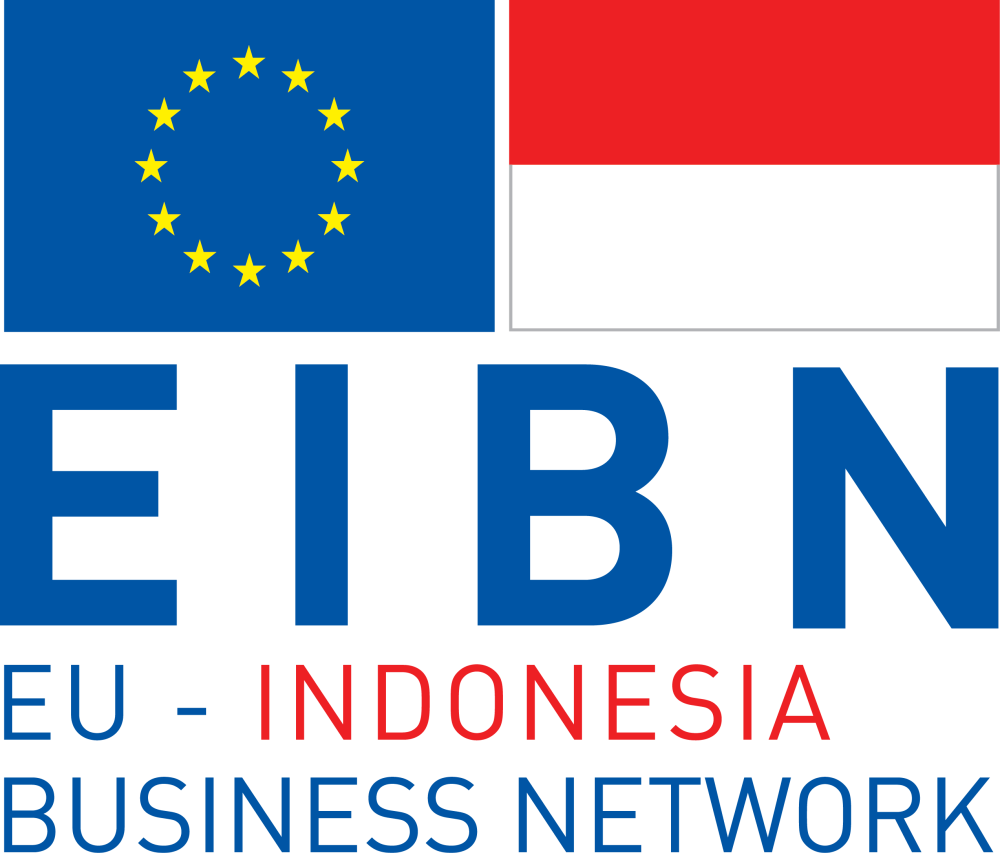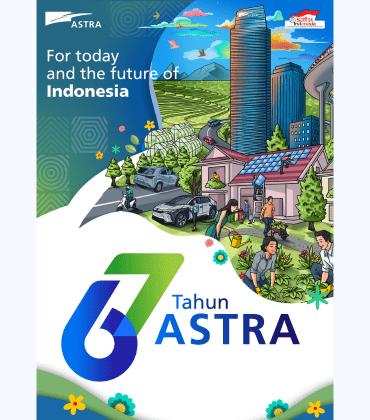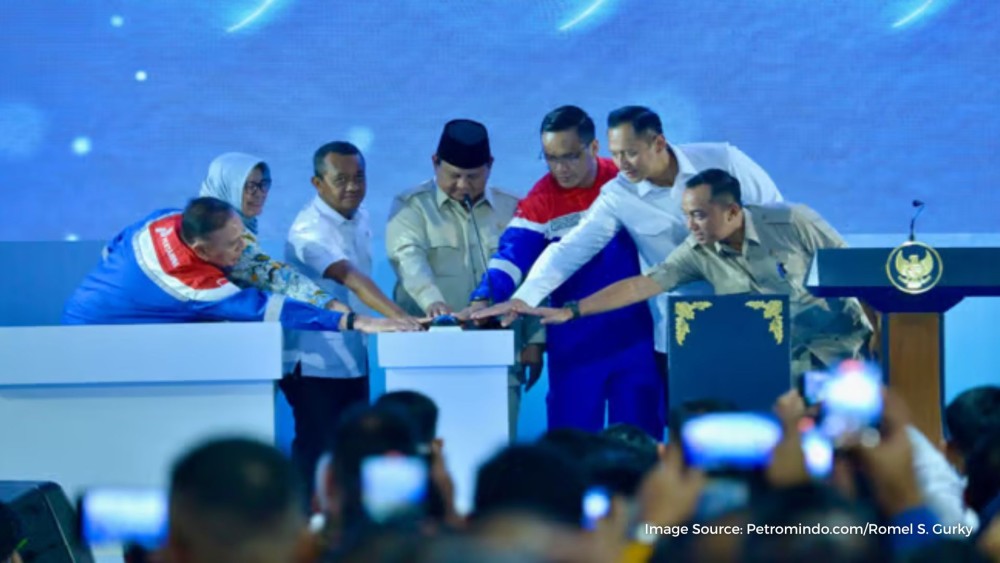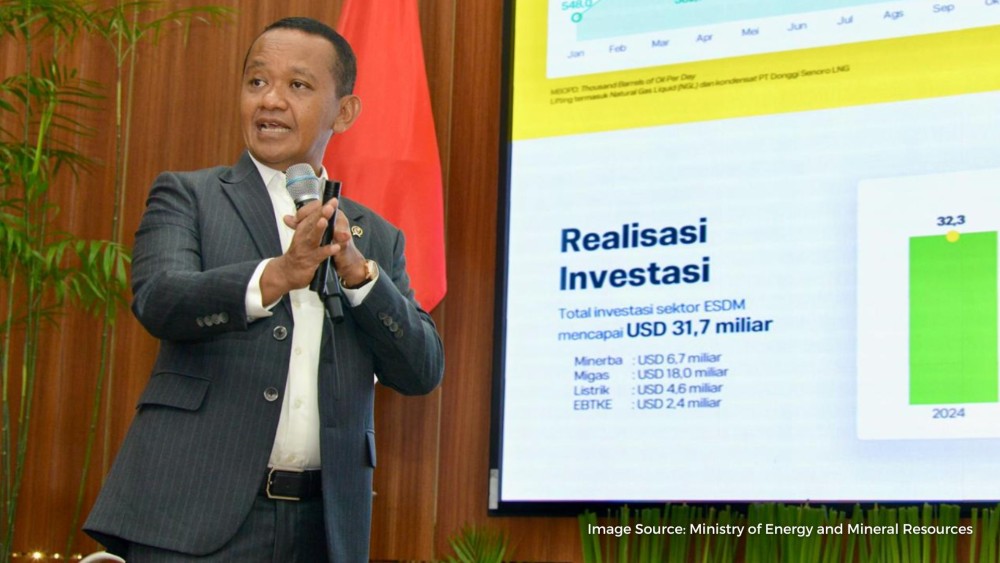Indonesia, the fourth-largest country in the world with around 275 million inhabitants, has been experiencing continuous economic growth of around 5% per year for several years. Thanks to this positive economic development, the poverty rate has more than halved within the last 20 years. The driving force behind this economic growth is the growing population of the young, middle class in Indonesia; household consumption is responsible for 51.87% or most of Indonesia’s GDP in 2022. In the same year, GDP per capita was US$4,784.
This rapid economic development and sustained population growth comes with a significant increase in energy demand. In 2021, final energy consumption reached 123 million tons of oil equivalent, or an increase of 1.6% from the previous year. Official data in the same year shows that 87.8% of the country’s energy supply was dominated by coal, gas, and crude oil, while the rest was from renewable sources. Furthermore, the energy systems in Indonesia still rely more heavily on large, centralized power plants than smaller-scale grid-connected renewable energy systems. As a result, some of the country’s most remote areas are often insufficiently or not at all supplied with electricity from centralized power plants, and should rely on expensive and environmentally harmful diesel-powered generators.
Concerning this situation, the government has been pursuing efforts to shift away from a centralized energy system towards a more distributed energy system that incorporates smaller-scale renewable energy sources such as solar, wind, and hydro. The goal is to improve energy access and affordability, reduce greenhouse gas emissions, and promote energy security.
Indonesia’s ambitious goals in terms of expanding the country's renewable energy capacities are embodied among others in the National Energy Policy, the National Energy Efficiency Action Plan, and the Renewable Energy Development Plan. According to the prevailing National Energy Policy, for instance, 23% of the primary energy mix should come from renewable energy sources by 2025. In addition, the Jokowi administration has committed itself to reduce greenhouse gas emissions as part of the Paris Climate Protection Agreement. Later on, an expansion of renewable energies is expected to reduce the dependency on oil imports from abroad. In order to meet all goals and obligations as much as possible, a significant expansion of renewable energies is necessary, which opens up opportunities for foreign companies. Looking at the natural conditions in Indonesia, it becomes clear that solar and wind energy in particular offer great potential. The average global horizontal solar irradiation is 4.80 kWh / m² / day, and the average wind speed is between 3 and 7 m / s. The total potential of energy from wind and solar energy is almost 270,000 MW, of which only a fraction has been used so far.
The government, through the state electricity company PLN, also encouraged the adoption of renewable energy through net-metering system, which allows households and businesses to generate their own electricity using solar panels and sell any excess energy back to the PLN grid. Nevertheless, renewables remain insignificant with only 0.35% share in the power generation capacity.
There is great market potential in Indonesia in the field of decentralized energy supply, especially with photovoltaics and wind energy. However, since both the photovoltaic and wind energy markets are regulated by Regulation of MEMR No. 50/2017 concerning the Utilization of Renewable Energy Resources for the Provision of Electricity, the individual projects are mostly dependent on the national energy supplier PLN and other institutions. Other policy challenges include a local content requirement, which is regulated under the Regulation of MEMR No. 5/2017 on Increasing Mineral Added Value through Domestic Mineral Processing and Refining Activities. The required local content for solar panel industry, for example, is still 40%.
Thus, business in the Indonesian energy sector is fundamentally dependent on political and legal framework conditions and must be secured against possible risks and planned sustainably. If projects with public participation are to be implemented, companies will be burdened with environmental responsibility reports and decision-making difficulties with wider stakeholders such as state companies and authorities. Negotiations with PLN are also considered to be very lengthy. For example, a network access report must be available before network release, which can take a long time. A lengthy process can also be assumed when signing contracts.
Certain challenges can also be expected in direct contact with potential buyers of technical equipment. Buyers in Indonesia tend to find operating costs and plant and equipment efficiency inadequate to consider. In addition, already-established technologies are preferred to lesser-known technologies, often due to a lack of information about the lesser-known technology. It is, therefore, necessary to persuade buyers of technical equipment. As a result, it is essential for foreign companies to have sufficient local expertise and to network in the market.
For system manufacturers, knowledge of local conditions and needs is important in order to be able to offer the right products and services. For example, it is important to understand local perceptions of company sizes in order to find Indonesian partners with adequate purchasing power and quality standards. The exceptional climatic or geological conditions can also make product modifications necessary. Another aspect that should not be neglected is the review of the infrastructural conditions at project locations, which often do not meet European standards. This is necessary in order to get a precise picture of the need for logistics and possible additional costs.
A general challenge is to convince Indonesian companies to make long-term investments in expensive but high-quality systems. Lower investments in systems of poor quality are preferred for a quick return on investment. Long-term factors such as the service life of the components or maintenance costs are often neglected.
The prosperous economy and the increasing prosperity of many private households in Indonesia consequently leads to increasing demand for electricity. So far, fossil fuels have primarily been used to cover electricity requirements, but renewable energies must also be expanded in the future, after all, the Indonesian government has the goal of achieving a share of renewable energies in the primary energy mix of 23% by 2025.
In fact, renewable energies are particularly suitable for off-grid operations away from the densely populated islands of Java and Bali. A large number of inhabited islands, the often inadequate supply situation of remote areas by the state electricity supplier PLN and the high demand for electricity from remote households and companies offer an opportunity for private players in the field of renewable energies. Wind and solar energy in particular are potential energy sources due to their enormous resource potential. They can supplement or replace the frequently used diesel generators and thus contribute to a more economical and ecological power supply.
As far as the political and legal framework of the Indonesian energy market is concerned, reference should first be made to the generally stable political situation in Indonesia. This political stability, the progressive liberalization of the energy market and the tax incentives make a decisive contribution to a continually improving investment climate. In addition, the legislature tries to respond to the needs of market participants, for example by developing new and better regulations.
Despite everything, there is still a certain need for improvement in the area of the legal framework. So far there are no direct subsidies for renewable energies, which, in connection with the feed-in tariffs linked to average prices, means that renewable energy sources are in direct competition with conventional energy sources. In addition, there is a complex and extensive bureaucracy as well as lengthy approval procedures. In addition, the legal framework is subject to regular changes, which leads to a lack of planning security.
It can be challenging to finance renewable energy projects in Indonesia. The main reason for this is that Indonesian commercial banks shy away from the most long-term amortization periods of projects in this area, which is based on experiences from the Asian crisis at the end of the 1990s. In addition, there is often a lack of experience with corresponding projects, which is why financing with local banks is difficult. Alternatively, financing with the help of international organizations and development banks is an option. There is a multitude of possibilities, for example, the ADB or the World Bank, which already have sufficient experience in the financing of renewable energies. The German KfW also offers numerous financing options through the German Investment and Development Company. Furthermore, there are a number of public-private initiatives launched by the government concerning the energy transition, such as the Just Energy Transition Partnership (JETP), Energy Transition Mechanism (ETM), and Energy Transition Partnership (ETP).
The market potential for photovoltaics and wind power in Indonesia is very promising despite the above-mentioned obstacles. There are already some examples of foreign (including German) companies that are successfully active in this industry in Indonesia. Since the market is not yet saturated and the development of these technologies has not yet been completed, newcomers who are already successfully establishing themselves can secure long-term competitive advantages. In particular, the establishment of a network and the targeted selection of suitable cooperation partners are decisive for a successful engagement in Indonesia.
This content is done in collaboration with:
Business Sectors







